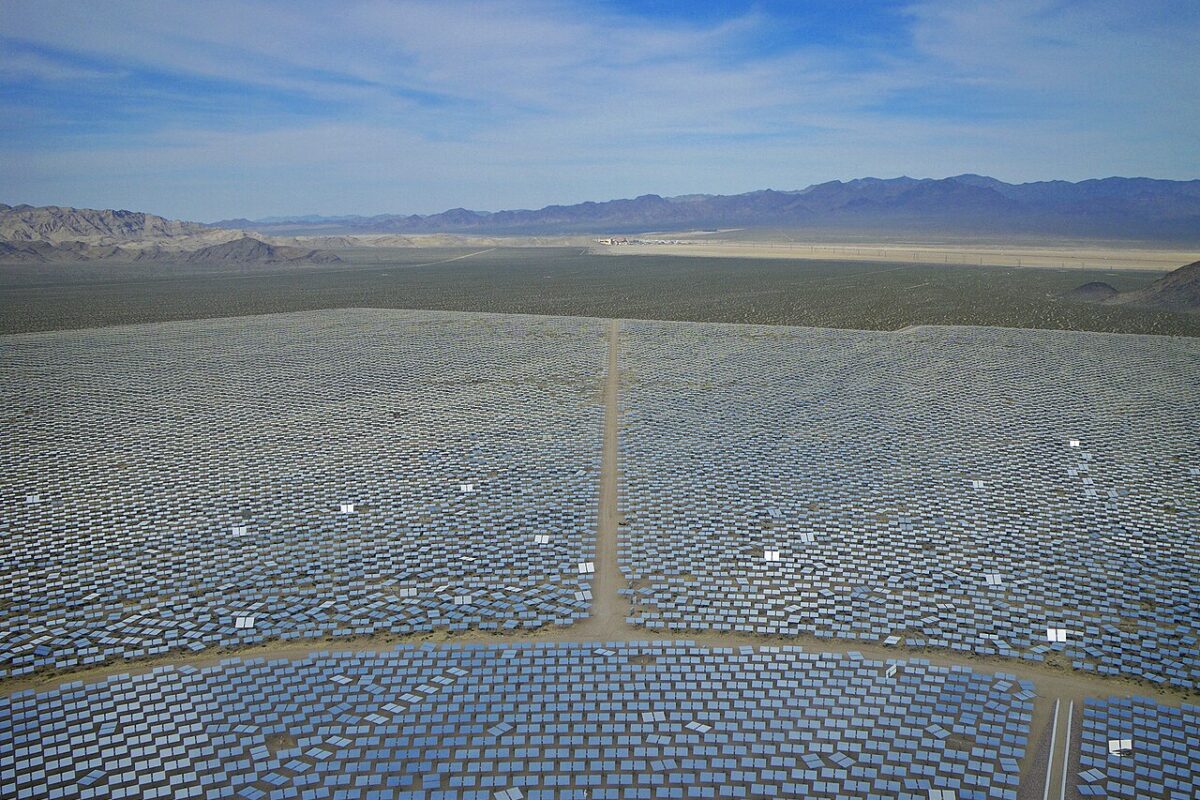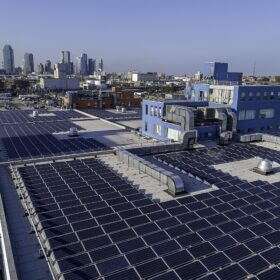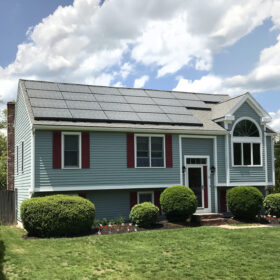In an industry where tight timelines and supply chain challenges are the norm, several solar companies are proving that extraordinary project execution is possible through strong partnerships and domestic manufacturing capabilities.
From PO to completion in record time
When a 22-megawatt tracker project in Texas faced a supplier crisis, OMCO Solar, the largest custom roll former in the United States, delivered all structural components within just eight weeks from purchase order—a timeline almost unheard of in the industry.
“We were able to put together a very aggressive manufacturing schedule, utilizing capacity across multiple plants,” explains Eric Goodwin, vice president of business development at OMCO Solar. “Having our torque tube production in both Pearson, Indiana, and Phoenix, Arizona allowed us to ship from two locations simultaneously.”
This rapid response capability stems from OMCO’s vertically integrated manufacturing approach. With five manufacturing facilities totaling 700,000 square feet and approximately 13 gigawatts of annual capacity, the company produces every structural component of their tracker systems domestically.
The Arizona miracle: 4 MW in under 90 days
Even more impressive was a recent 4-megawatt project in Wilcox, Arizona, completed from initial contract to permission-to-operate in just 90 days. The project, developed by Obodo Energy Partners and installed by Sunstall and Icon Electric, showcases what partnership and trust can accomplish.
“Although we always have faith in our collective ability to deliver projects on-time, it was no small miracle that every aspect of the project came together for permission to operate by Christmas,” says John Mitman, CEO of Obodo Energy, referencing the project’s five separate interconnections and tight deadline driven by tax credit requirements.
Helge Biernath, president and CEO of Sunstall, attributes its success to decisive communication and the domestic manufacturing advantage: “My life is much easier if my customer is decisive, knows what they’re doing, and gives me the signatures and support we need to be efficient.”
The partnership advantage
Behind these exceptional timelines lies a foundation of trust built through repeated collaboration. OMCO Solar and Sunstall are approaching their 100th project together, having completed approximately 150 projects totaling around 400 megawatts over the past six years.
“Having the ability to call someone who understands your product intimately, who has built it numerous times before, is invaluable,” says Matt Kesler, Director of Solar Technology at OMCO Solar. “When challenges arise in the field, we can respond within hours, not days.”
This responsiveness proves critical when encountering pile refusals or other site condition challenges. The OMCO bearing design offers six levels of adjustability for misaligned piles, dramatically reducing rework and keeping projects on schedule.
“If you have to bring the pile driver back out to the site, you might lose days,” Kesler explains. “Our bearing design helps installers adapt to real-world conditions without costly delays.”
Navigating IRA compliance
As projects navigate Inflation Reduction Act requirements, this same partnership approach helps streamline compliance. For domestic content requirements, OMCO provides about 88% domestic content for their trackers, with plans to reach 100% by mid-2025.
“We’ve always had the same business model since day one—U.S. manufacturing, U.S. steel,” says Goodwin. “The safe harbor template model released by Treasury has made it easier for customers to determine what qualifies.”
For prevailing wage and apprenticeship requirements, early coordination proves essential. Biernath recommends securing a Limited Notice to Proceed (LNTP) 45 days before construction to address the apprenticeship documentation requirements.
Looking forward
These partnerships are now focusing on innovation to address industry workforce challenges. OMCO and Sunstall are collaborating with Dean Solon’s new company, Create Energy, on automation solutions to reduce labor needs and further speed installation.
“How do you design a plant and installation process needing fewer people?” Goodwin asks. “We’re focusing on taking out waste, driving lean manufacturing principles, and increasing pre-assembly.”
As the solar industry continues its rapid growth, these collaborative approaches to project execution will become increasingly valuable. The companies that master these partnerships—combining domestic manufacturing, field experience, and responsive problem-solving—are positioned to thrive regardless of policy changes.
“If we’re fast and cost-competitive,” concludes Biernath, “it doesn’t matter what happens. We’re going to win.”

Tim Montague leads the Clean Power Consulting Group and is host of the Clean Power Hour podcast. He is a solar project developer, cleantech executive coach and consultant, mastermind group leader, entrepreneur and technology enthusiast.
The views and opinions expressed in this article are the author’s own, and do not necessarily reflect those held by pv magazine.
This content is protected by copyright and may not be reused. If you want to cooperate with us and would like to reuse some of our content, please contact: editors@pv-magazine.com.








By submitting this form you agree to pv magazine using your data for the purposes of publishing your comment.
Your personal data will only be disclosed or otherwise transmitted to third parties for the purposes of spam filtering or if this is necessary for technical maintenance of the website. Any other transfer to third parties will not take place unless this is justified on the basis of applicable data protection regulations or if pv magazine is legally obliged to do so.
You may revoke this consent at any time with effect for the future, in which case your personal data will be deleted immediately. Otherwise, your data will be deleted if pv magazine has processed your request or the purpose of data storage is fulfilled.
Further information on data privacy can be found in our Data Protection Policy.